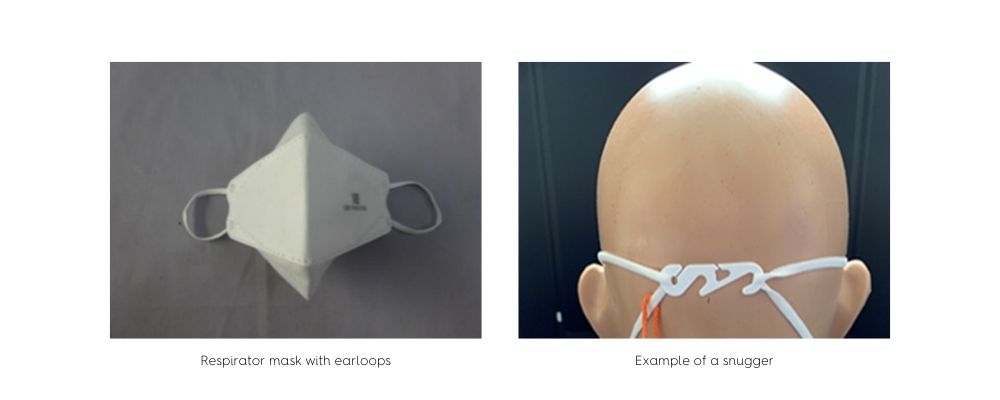Ear-loop Respirators and Masks

What is the HSE’s concern?
New research conducted by HSE has demonstrated that respirators / masks which rely on ear loops – including those provided with clips, “snuggers” or other means of tightening the fit of the mask – to hold the respirator / mask in place, are not protecting people adequately when used as tight fitting respiratory protective equipment (RPE).
Outline of the problem
Due to a noticeable increase in the variety of ear loop respirators / masks being made available which indicate they offer the protection provided by FFP2 (filtering facepiece respirators or disposable half mask respirators) HSE has looked at these products to check they are in fact providing the protection required by having a good seal with the wearer’s face.
They found that for most workers who are required to wear tight fitting RPE in the workplace, a good enough seal cannot be achieved with a respirator / mask relying on ear loops to hold it in place.

To ensure there’s no confusion
To ensure there is no confusion, and to provide adequate protection for individual wearers, ALL tight-fitting RPE should be fit tested by a competent assessor as part of the process. HSE conducted its research, and this clearly demonstrated that in the majority of cases CE or UKCA marked ear loop masks / respirators did not pass a face fit test.
Due to this the HSE’s recommendation is that ear loop mask / respirators are not to be used as RPE in the workplace as it is highly unlikely to provide the wearer with the right protection. This includes any respirators / masks which use clips, ‘snuggers’ or other means of tightening ear loops, even if they have CE or UKCA marks.
Following publication of a previous HSE Safety Alert regarding the use of face masks designated KN95, the NHS took early action to exclude ear loop respirators / masks from their supply chain due to concerns over their protection. As a result, respirators with a head harness will have been supplied and fit test completed with this style of respirator.
Surgical masks and other face coverings are not affected
It is also important that there is no confusion between FFP2 masks / respirators with masks and fluid resistance surgical masks (FRSM). They may have ear loops to secure them, but they are used for a different purpose and are not required to be tight fitting.
What do you need to do now?
Duty holders (employers) are asked to revisit the risk assessments conducted due to the Control of Substances Hazardous to Health Regulations and check that the RPE provision is adequate and suitable for the user and the activity to be undertaken. If you have identified that tight fitting RPE is required, you should note that HSE does not recommend using a mask / respirator which relies on ear loops to hold it in place and ensure they are not in use.